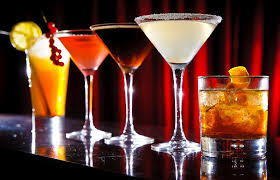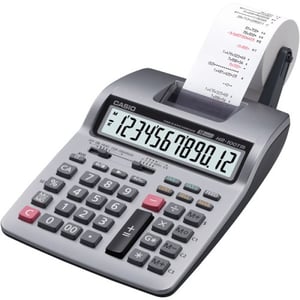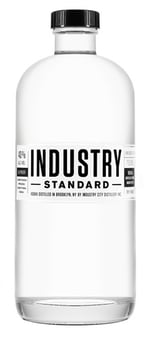Most bars are using two main metrics to evaluate their performance: sales volume and liquor cost. Sales volume tells you how many dollars are generated per week by sales behind your bar, and it’s the most fundamental performance metric used by bar owners. However, this metric doesn’t provide you with any information about your margin. In order to determine your margin, you also need to know your liquor cost.
As a result, liquor cost is the next most important performance metric for bars, running closely behind sales volume. Together, these two metrics tell you how much money you’re making (your bar’s gross profit). While liquor cost may seem like a basic metric, it’s actually much more nucanced than you might think once you dig into it....
What is Liquor Cost?
 Liquor cost measures the direct costs of creating your products. In the case of bars, the product is a drink, and the direct cost of producing this drink is the cost of the alcoholic ingredients being used.
Liquor cost measures the direct costs of creating your products. In the case of bars, the product is a drink, and the direct cost of producing this drink is the cost of the alcoholic ingredients being used.
Of course there are other ingredients/elements that impact the cost of the drinks you produce, including:
- Mixers such as sodas or fruit juices
- Ice
- Labor costs
However, these items are typically not included in liquor cost calculations since they typically only increase the overall cost of the drink by a small amount. Typically we focus on the cost of the alcohol used to make the drink when we figure out the liquor cost.
Another way to view liquor cost is that it’s the opposite of profit margin. For example, if you spend 20 cents making a drink and sell it for a dollar, your profit margin is 80 cents. The opposite side of this equation (20 cents) is your liquor cost, which is typically calculated as a percentage revenue (in this example, 20%).
It's worth noting also that Liquor cost can be calculated on the product level (i.e. the liquor cost for Bud drafts sold at your bar) as well as on the category level (i.e. the liquor cost for all draft beer products sold at your bar).
What is the Typical Range for Liquor Cost?
There is a pretty wide range for the liquor costs calculated at different bars. It can be as low as 10%. This type of figure is most commonly found at high end clubs and other establishments that are able to sell products at a price point which yields a large profit margin.
But in general, most bars in the industry operate with a liquor cost in the 18-25% range. The actual value of your bar’s liquor cost will be based on a variety of factors specific to your bar. However, with rare exceptions you should be a bit concerned if your liquor cost consistently runs above 25%.
Calculating Liquor Cost
 On the surface, calculating liquor cost is a fairly basic process: take your purchase cost of an item and divide it by the amount you charge for the product. For example, if you pay your distributor $1 for every bottle of Budweiser and you sell the product to your customers for $5, your liquor cost on Bud bottles is 20%:
On the surface, calculating liquor cost is a fairly basic process: take your purchase cost of an item and divide it by the amount you charge for the product. For example, if you pay your distributor $1 for every bottle of Budweiser and you sell the product to your customers for $5, your liquor cost on Bud bottles is 20%:
$1 ÷ $5 = .2
However, this calculation is also impacted by a variety of other factors which affect these numbers in the real World. These factors include:
- Tax – When you sell a drink for $5, the bar doesn’t keep all of that money because sales tax is built into that total. In reality, your bar may only make approximately $4.80 out of that $5, depending on your state’s sales tax rate.
- Comping – Comping a certain number of drinks per shift is a common practice at most bars, and it can be a valuable tool to grow your business. In addition, employees often receive shift drinks that are either free or reduced price, and most bars typically offer Happy Hour and other drink specials which lower the price of a drink from time to time. These discounts all impact your liquor cost.
- Shrinkage – Not all of the products sold at your bar are actually rung into your system. There are several reasons for this: bartenders may give away a drink without ringing it in to improve their tips, drinks are sometimes dropped and have to be remade, and drinks which were made incorrectly have to be remade. Regardless of the reason, this phenomenon, called shrinkage, will impact your liquor cost.
- Aggregation – Liquor cost can be calculated for each product, but it will vary wildly. For well products, it can be around 10%, but for high end products, the liquor cost can often be closer to 30%. If you’re only calculating one overall liquor cost for all of your products at the category level, you end up blending these wildly different costs together, which causes you to lose a level of granularity in your data. Ultimately, this makes it more challenging to evaluate the performance of each product sold at your bar.
3 Types of Liquor Cost
There are essentially 3 different liquor cost figures that you can calculate:
- Theoretical liquor cost
- Actual liquor cost
- Achievable liquor cost
Each of these figures is telling you something entirely different, and it’s important to understand the differences in order to accurately evaluate the performance of your bar.
Theoretical Liquor Cost
Theoretical liquor cost is the simplest figure because it doesn’t include the effect of the real world factors listed above (tax, comping, shrinkage, etc.). Instead, this figure is just your bar’s purchase cost of one serving divided by the retail price of that serving. The 20% liquor cost for a bottle of Budweiser calculated in the example above is a great illustration of a theoretical liquor cost.
The main problem with theoretical liquor cost is that it doesn’t account for real world factors which impact this figure. As a result, your actual liquor cost will never be the same as your theoretical liquor cost.
However, this figure is useful in situations where theoretical calculations are needed, such as when you are setting your price point for the products you sell to your customers.
Actual Liquor Cost
Actual liquor cost accounts for the real world issues listed above which prevent you from making the full profit possible off of every drink served (your theoretical liquor cost). This is the figure that most people arrive at when they calculate the liquor cost for the bar.
The value in calculating actual liquor cost is that this figure is based on the realization that tax is always applied to the cost of a drink and that discounting is a necessary cost of doing business. Therefore, it provides more of a real-life assessment of your bar’s performance.
However, there is a problem with relying solely on actual liquor cost. It becomes very easy to accept this figure as what can be achieved and lose track of the actual value that can be obtained when your bar’s accountability is at optimal levels. Therefore, if you’re only looking at your actual liquor cost, it can be difficult to determine whether your bar’s liquor cost is as low as it can possibly be.
Achievable Liquor Cost
If you take away all of the factors that can’t be controlled (tax, product mix, comping, Happy Hour discounts, etc.) and focus on the effect of missing products, then you can determine what your liquor cost would be in a situation where you had 100% accountability and weren’t missing any product. We call this figure your achievable liquor cost.
The achievable liquor cost figure is unique to Bar-i and other sophisticated inventory services. It’s imperative that you use a sophisticated liquor inventory system when calculating achievable liquor cost because you’re trying to identify what your liquor cost would be if you didn’t waste a single drop of alcohol. To do this, you need to know the exact way every drink was made so that you can determine precisely how many ounces of liquor should have been used in each drink served. This is a much more complicated figure to calculate as it requires having a precise recipe for every button in your POS system.
The primary advantage of calculating your achievable liquor cost is that it factors in bar-specific elements such as tax, product mix, comping and other discounts, but it backs out the effect of the one item you can control – shrinkage. It’s the 100% accountability equivalent that tells you where your liquor cost could be.
If everything poured by your bartenders was rung into the system and charged to customers, you would have 100% accountability. This scenario would allow you to reach your achievable liquor cost.
There are several other benefits associated with calculating your achievable liquor cost:
- Real life target – This figure is something to aim for that’s specific to your bar. It allows you to determine how much you’d make if you were able to improve your accountability to 100%. This gives you tangible goals to set for your staff, making it more likely that you will eventually achieve them.
 Provides clarity by avoiding comparisons to an “industry standard” – All bars are different, so comparing your liquor cost to an industry standard doesn’t tell you whether your bar is performing as well as it possibly can. Achievable liquor cost replaces the “industry standard” comparison point with your optimal performance level as the primary comparison point to your current performance level.
Provides clarity by avoiding comparisons to an “industry standard” – All bars are different, so comparing your liquor cost to an industry standard doesn’t tell you whether your bar is performing as well as it possibly can. Achievable liquor cost replaces the “industry standard” comparison point with your optimal performance level as the primary comparison point to your current performance level.- Provides a tool to improve profitability – Most bars typically run at 80-85% accountability. This means that your liquor cost will typically be 3-4% lower than what can be achieved with 100% accountability (on average, you experience a 1% reduction in liquor cost for every 5% increase in accountability). Managing this difference is key to improving your profitability.
If you want to identify a realistic liquor cost target to aim for based on the unique specifics of your bar (an accurate achievable liquor cost), you’ll need to use an inventory system that provides down to the serving accuracy. This is the only way you’ll be able to generate the actionable data necessary to maximize your bar’s performance and profitability.
To learn more about how Bar-i can help you maximize profits and improve your bar’s performance, please contact us today to schedule your free consultation. We serve clients nationwide from our offices in Denver, Colorado.

